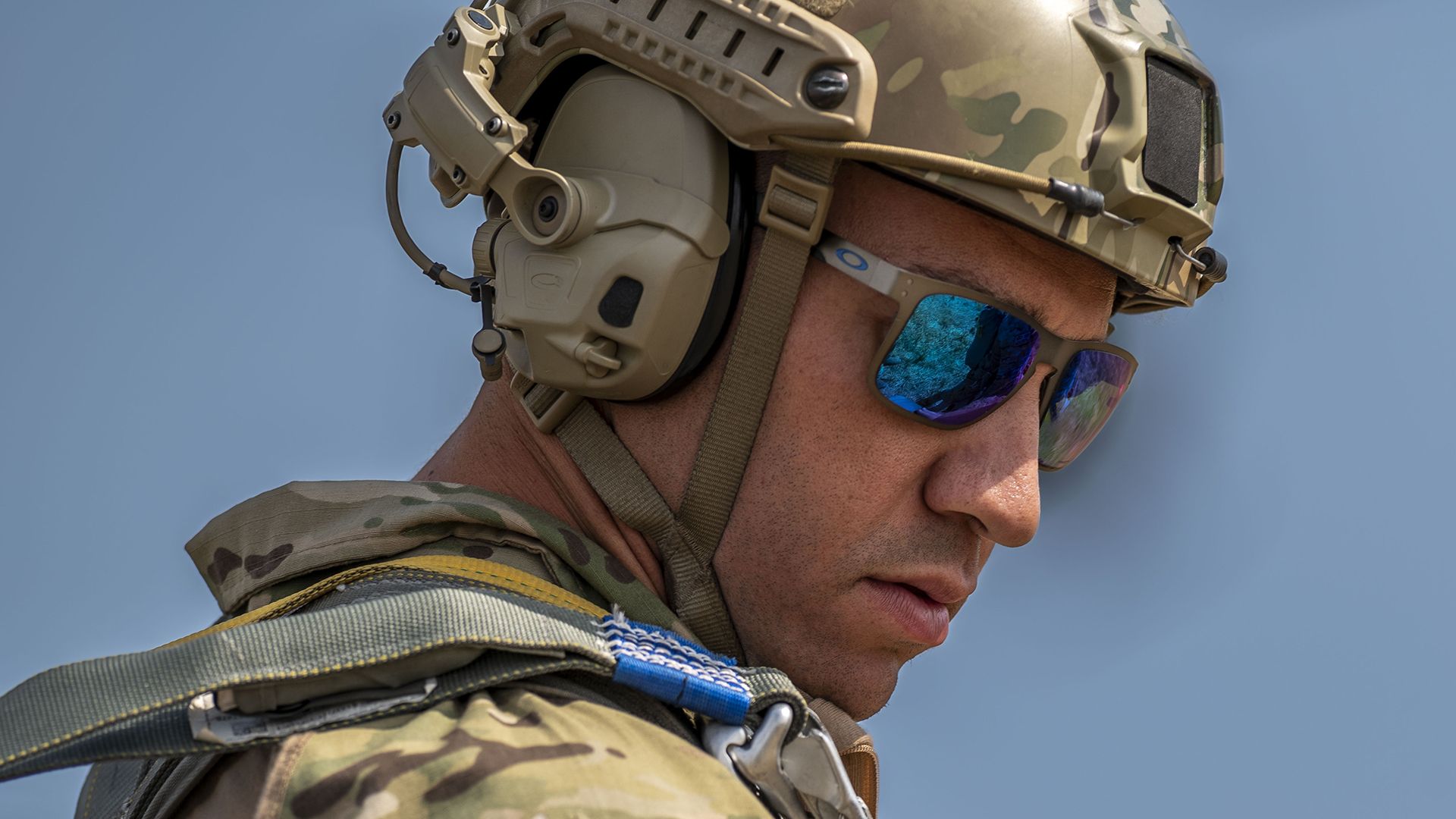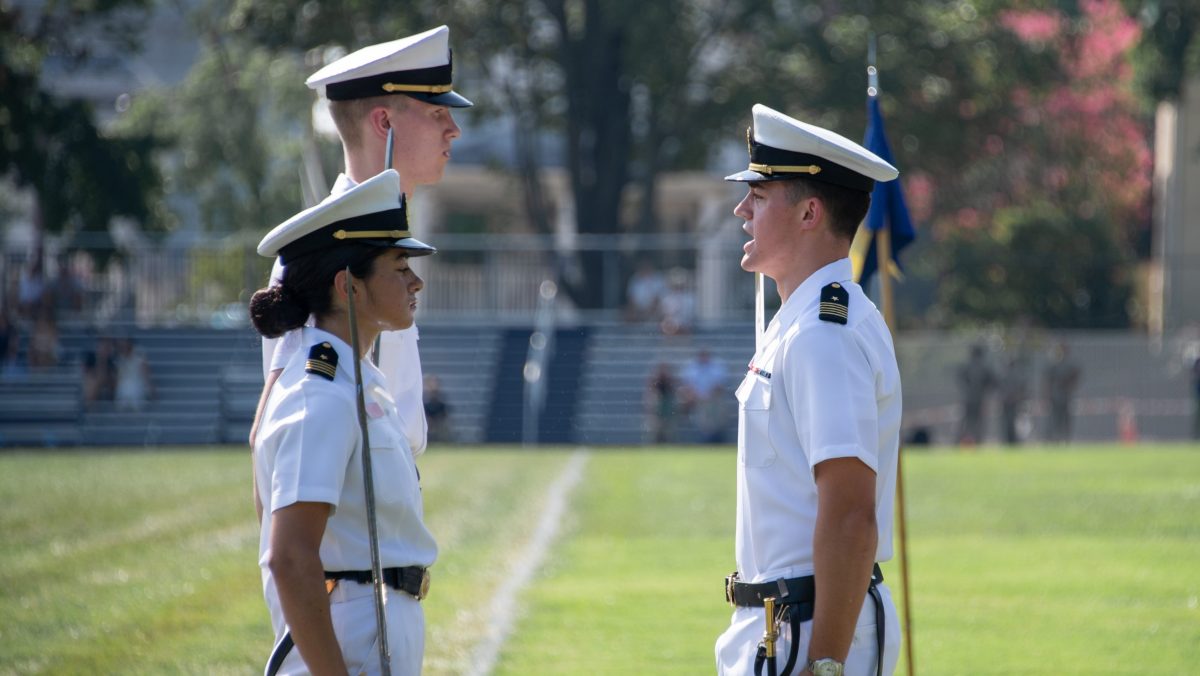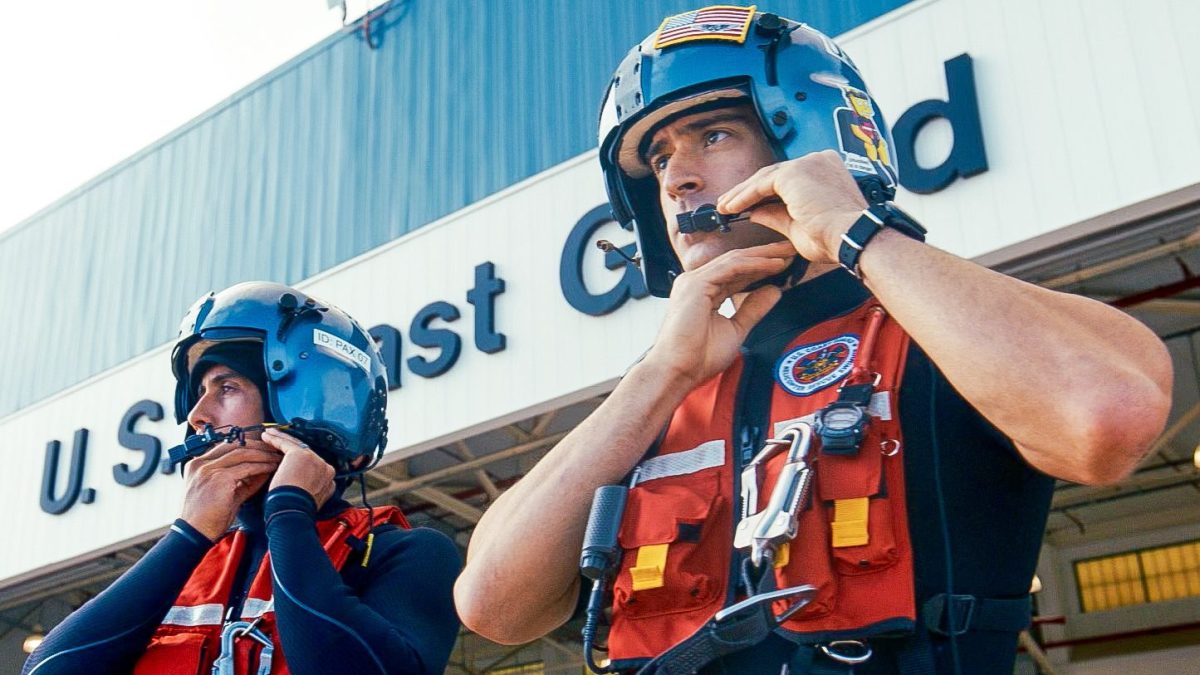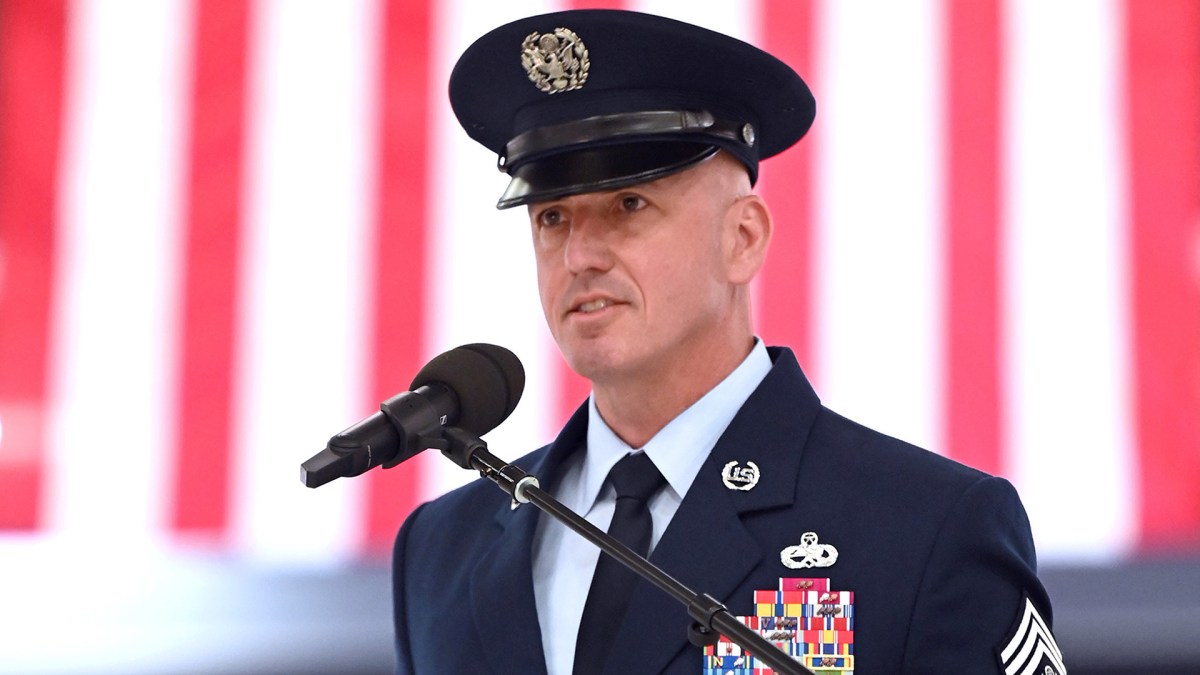
An Air Force Survival, Evasion, Resistance and Escape, or SERE, specialist at Fairchild Air Force Base, Washington. The command that oversees all Air Force training school including SERE training at Fairchild is considering cutting the True North resiliency program, which embeds mental health professionals directly in "priority units" to make access to services simpler for those assigned. Air Force photo by Senior Airman Tiffany Del Oso.
The Air Force touts its True North program as a unique success in getting mental health support directly into some of its most stressful workplaces. Rather than expect airmen who need mental help support to take time away from their daily jobs to visit professionals in clinics and hospitals, the program embeds mental health and religious support teams directly in units, where airmen work.
But officials at Air Education and Training Command, or AETC, are now looking to cut the program, as part of cost-cutting across its civilian workforce.
Although an AETC spokesperson told Task & Purpose that the command’s proposal is not final, the move is already having repercussions. Jeffery Clark, a licensed clinical social worker, told Task & Purpose he recently resigned from True North at Fairchild Air Force Base in Washington after being told AETC is phasing out the program.
“They told us in a meeting that we had 24 hours to get back to them on an Excel spreadsheet that they provided to us on how many patients we were currently seeing and to start developing coordination and care plans with the local treatment facilities,” said Clark, who embedded as a clinical social worker with the with the 36th Rescue Squadron and the Survivor, Evasion, Resistance and Escape School at Fairchild.
Top Stories This Week
Those units include high-stress SERE training programs and active rescue operations in the Washington mountains. While embedded in the units, Clark would join physical training with instructors and operators and fly missions at all hours, he said. The job, he said, was much different from that of a therapist who works during scheduled hours at a clinic.
“These are special operations personnel, and any sort of medical documentation can reduce their ability to engage in the mission set.” Clark said.
The potential end of AETC’s True North program was first reported by KXLY, a radio station in Spokane, Washington.
“It’s just a very, very dynamic role that brings the care to the service member instead of them having to stop their mission,” he said. Airmen seeking help at a traditional clinic, he said, might “need to take a day off and the schedule has to change because it takes time to get to the clinic, to check in, all those different things.”.
Future status of program unclear
Clark found out his position in True North was being eliminated from a memo dated Sept. 24. He also was forwarded a Sept. 25 email sent to “commanders and directors” across the command from AETC’s director of manpower, personnel and services that spelled out the end of the program.
“As part of the AETC’s approved submission to the Department of the Air Force (DAF) FY26 Workforce Optimization Reductions, all True North (TN) program positions will be removed” on October 1, the email said. “The command appreciates the commitment our TN professionals provided to our Airmen. As we move through this transition, leadership remains steadfast in ensuring that the wellbeing of our Airmen is a top priority.”
An Air Force official confirmed to Task & Purpose that the Sept. 25 email was distributed across AETC but updated guidance had since clarified that AETC’s proposal to eliminate Truth North in its units is still tentative.
Lt. Col. Korry Leverett, an AETC spokesperson, said in a statement provided to Task & Purpose that no final decision on phasing out the True North program has been made.
A Department of the Air Force spokesperson echoed that message.
“The Department of the Air Force has not finalized Fiscal Year 2026 Civilian Workforce Optimization reductions,” the spokesperson said. “Airmen currently receiving support through programs subject to civilian workforce reductions will be transitioned to existing and readily available resources at their installation for continued care.”
 Jeffery Clark and his wife Kasey at Fairchild Air Force Base, Washington, where he worked for Air Education and training Command’s True North program. Photo courtesy of Jeffery Clark.
Jeffery Clark and his wife Kasey at Fairchild Air Force Base, Washington, where he worked for Air Education and training Command’s True North program. Photo courtesy of Jeffery Clark.However, True North’s embedded nature makes it unique among resiliency programs.
“If the strategic realignment of resources is approved by the Department of the Air Force, AETC will transition those Airmen receiving care within True North program to other resiliency-based programs to ensure consistent continuity of care,” Leverett said.
But that’s not how the situation was presented to Clark, who said AETC told him its decision to kill the program had been approved by Air Force leadership.
An Army veteran, Clark said an AETC official initially notified him his position would be eliminated by Oct. 1, and he would have to submit his resume to the civilian personnel office to find a new job. He was also told that AETC may not be able to continue paying him because he was a probationary employee.
Subsequently, he received an email from AETC saying that the Air Force had approved phasing out True North over time, and that he and others who worked for the program were expected to continue in their current roles until a formal plan to end True North could be implemented, Clark said.
Given the conflicting information, Clark resigned from True North on Oct. 3, after spending 10 months on the job.
Get Task & Purpose in your inbox
Sign up for Task & Purpose Today to get the latest in military news each morning.
Leverett said it determined that adequate resources were available on all its bases to airmen before considering its request to phase out the True North program as part of civilian reductions. It also said it is committed to providing “appropriate care” across the command.
“True North providers will thoughtfully and deliberately transfer Airmen to trusted support channels such as Military OneSource, Military and Family Life Counseling, installation behavioral health clinics, the Chaplain Corps, and off-base providers. Airmen may also self-refer at any time to a mental health provider,” Leverett said.
True North ‘brings the care to the service member’
The Air Force has presented True North as a unique resource to service members, military civilians and their families. An official Air Force website includes anonymous “True North Testimonials” about how well the program has worked to increase care and resiliency.
“Statistics and effectiveness reports concerning the program will never capture the true impact it has on the unit,” one quote reads. “No longer is mental health a last resort for Airmen in crisis, it is an education and clinical tool that prevents Airmen from getting to crisis in the first place.”
A 2024 report from the RAND Corporation found that research showed promising results of embedding behavioral health specialists in military, education, and healthcare environments.
“These impacts include greater service use, increases in accuracy of diagnosis, and greater continuity of care,” the report found.
In January, Air Force Chief of Staff Gen. David Allvin combined True North with another program, Operational Support Team, which temporarily embeds health professionals in units, to increase airmen’s access to care.
The embedded specialists must understand both the Air Force’s mission and the specific roles of the units that they work, Clark said. Providers provide a range of mental healthcare services ranging from coaching service members dealing with personal difficulties to counseling patients for more severe problems.
Clark’s role coaching airmen was particularly important, he said. They would talk to him about difficulties including having problems sleeping, arguing with their spouses, and dealing with the death of a loved one. Importantly, the process does not involve any documentation, he said.
The fact that he is embedded directly with Air Force units also makes him more available than other mental health providers, he said.
“I’m already there. I’m a quick text message or a phone call away, and I can be in their training site within a couple of hours, usually,” Clark said. “They’ll come stop by, they’ll schedule an appointment, and nobody knows that they’re doing that. And they get the work that they need, and they continue on with the mission.”
It’s unclear how many jobs might be at risk or how much savings AETC might see dropping the program. The Air Force does not appear to have published the total number of True North employees across the service or within major commands such as AETC. But a website says that within Air Combat Command — by far the Air Force’s largest major unit — True North “provides embedded support to more than more than 22,700 active-duty Airmen in 104 highest priority units at 27 DoD installations” including overseas.

Task & Purpose Video
Each week on Tuesdays and Fridays our team will bring you analysis of military tech, tactics, and doctrine.

.jpeg)























.jpeg)












 English (US) ·
English (US) ·